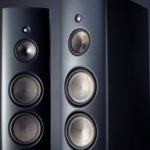might as well print a room with speakers integratedMy suggestion would be to print a pair of Revel Salon2's. Might as well go big.
At the MDF: New large-area, multi-material printer to advance research | ORNL
A second large-volume 3D printer recently installed at the Department of Energy’s (DOE) Manufacturing Demonstration Facility (MDF) will be modified to print two different materials on one object, significantly advancing the materials research being performed by Oak Ridge National Laboratory...

